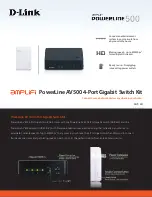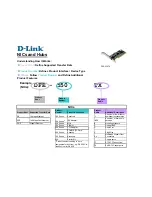
Raisecom
Gazelle S1000i-LI (A) User Manual
7 Appendix
Raisecom Proprietary and Confidential
Copyright © Raisecom Technology Co., Ltd.
71
C
Challenge
Handshake
Authentication
Protocol
(CHAP)
CHAP is a widely supported authentication method in which a
representation of the user's password, rather than the password itself, is
sent during the authentication process. With CHAP, the remote access
server sends a challenge to the remote access client. The remote access
client uses a hash algorithm (also known as a hash function) to compute
a Message Digest-5 (MD5) hash result based on the challenge and a
hash result computed from the user's password. The remote access client
sends the MD5 hash result to the remote access server. The remote
access server, which also has access to the hash result of the user's
password, performs the same calculation using the hash algorithm and
compares the result to the one sent by the client. If the results match, the
credentials of the remote access client are considered authentic. A hash
algorithm provides one-way encryption, which means that calculating
the hash result for a data block is easy, but determining the original data
block from the hash result is mathematically infeasible.
D
Dynamic ARP
Inspection
(DAI)
A security feature that can be used to verify the ARP data packets in the
network. With DAI, the administrator can intercept, record, and discard
ARP packets with invalid MAC address/IP address to prevent common
ARP attacks.
Dynamic Host
Configuration
Protocol
(DHCP)
A technology used for assigning IP address dynamically. It can
automatically assign IP addresses for all clients in the network to reduce
workload of the administrator. In addition, it can realize centralized
management of IP addresses.
E
Ethernet in the
First Mile
(EFM)
Complying with IEEE 802.3ah protocol, EFM is a link-level Ethernet
OAM technology. It provides the link connectivity detection, link fault
monitoring, and remote fault notification for a link between two
directly-connected devices. EFM is mainly used for the Ethernet link on
edges of the network accessed by users.
Ethernet Ring
Protection
Switching
(ERPS)
It is an APS protocol based on ITU-T G.8032 standard, which is a link-
layer protocol specially used for the Ethernet ring. In normal conditions,
it can avoid broadcast storm caused by the data loop on the Ethernet
ring. When the link or device on the Ethernet ring fails, services can be
quickly switched to the backup line to enable services to be recovered in
time.
F
Full duplex
In a communication link, both parties can receive and send data
concurrently.
G












































